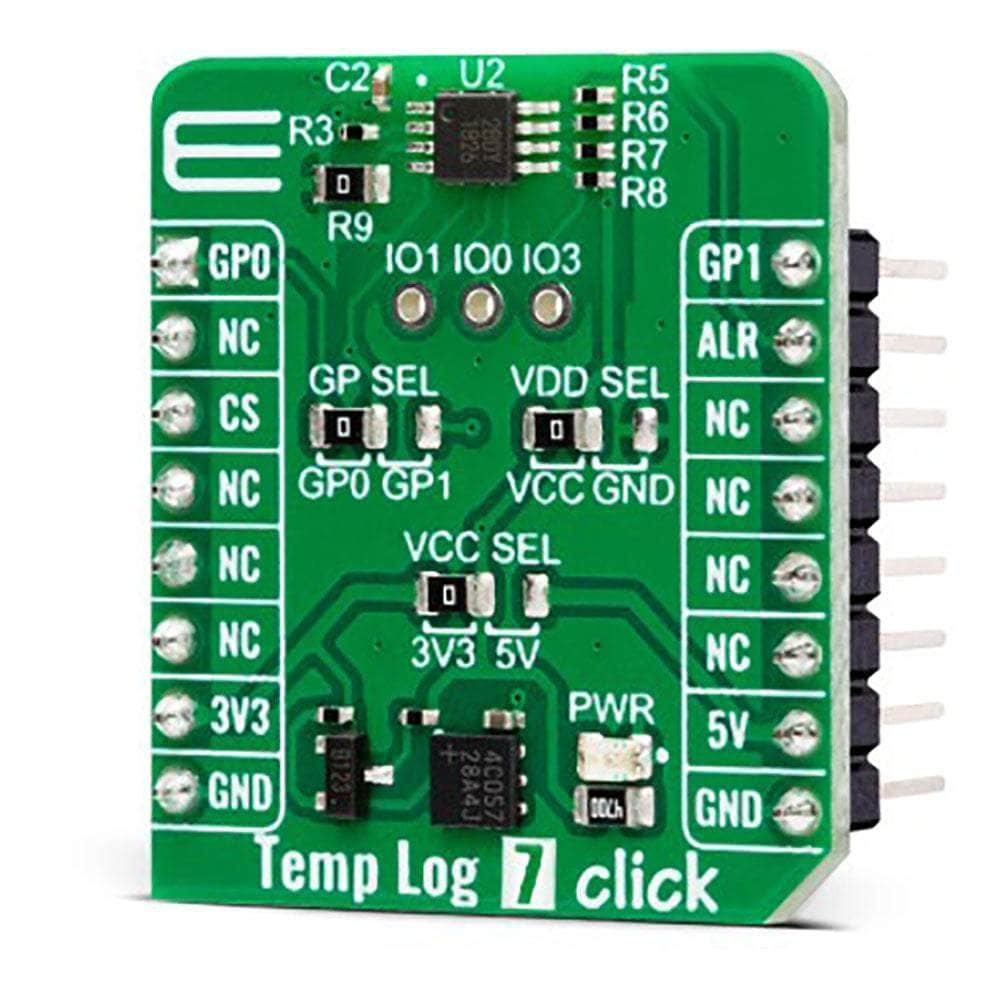
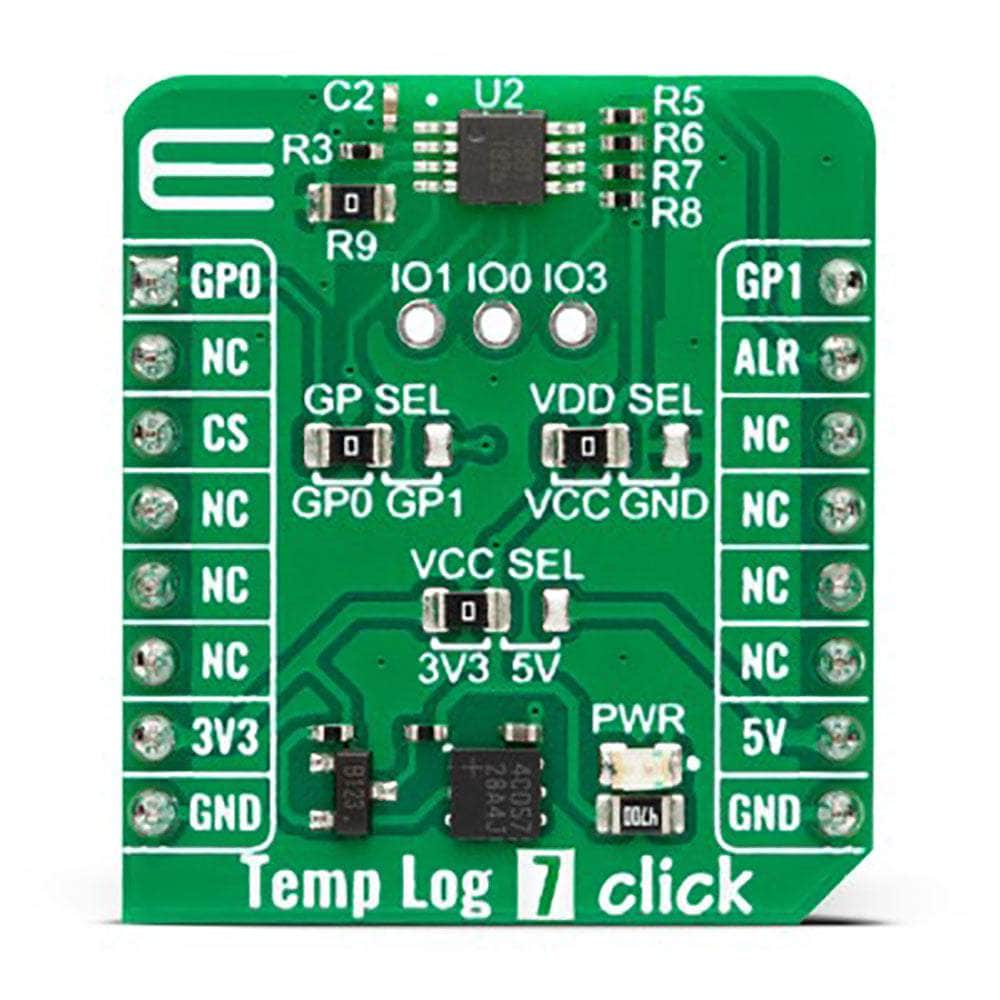
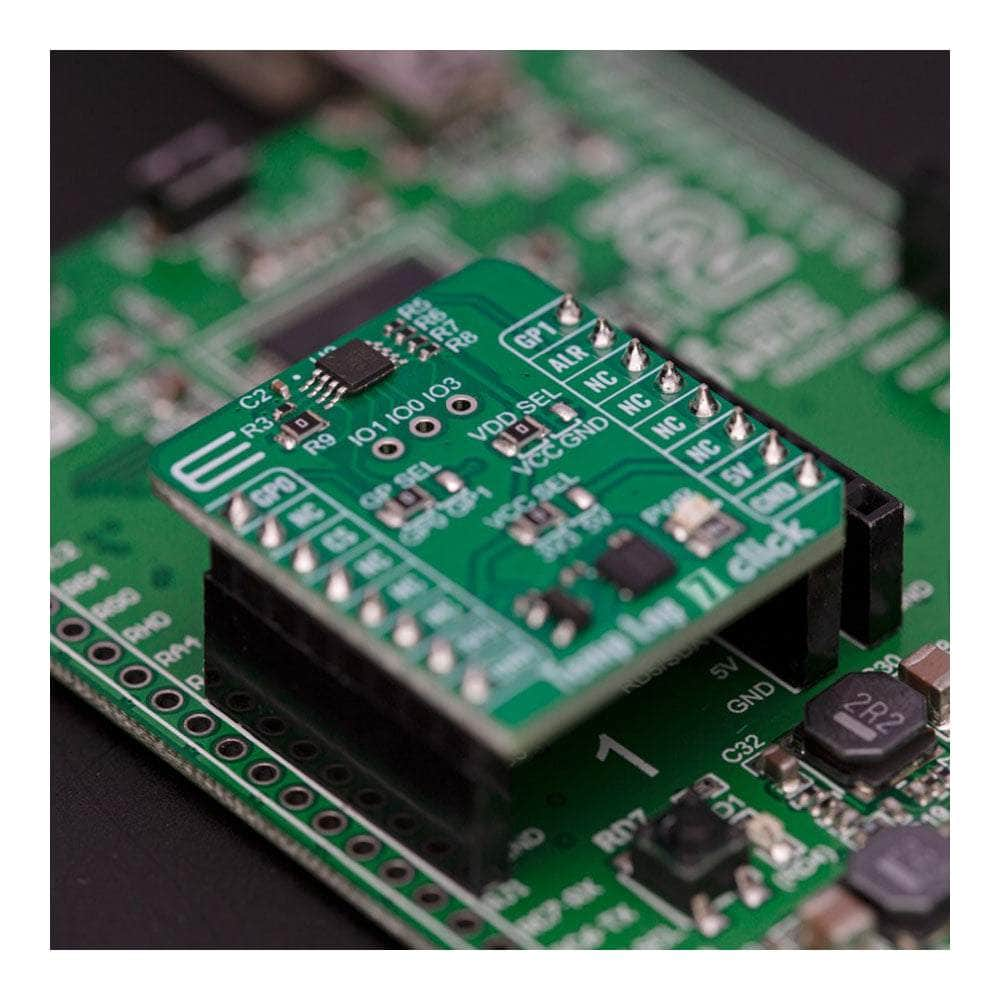
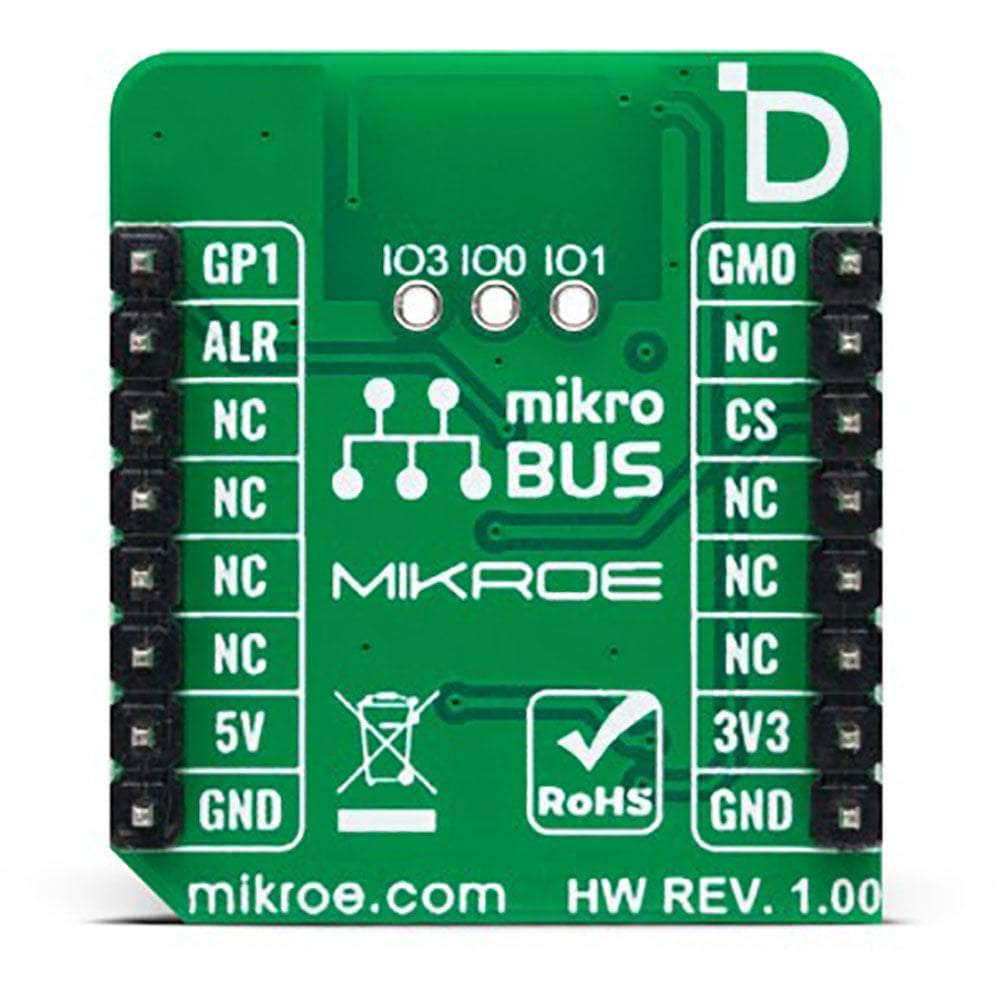
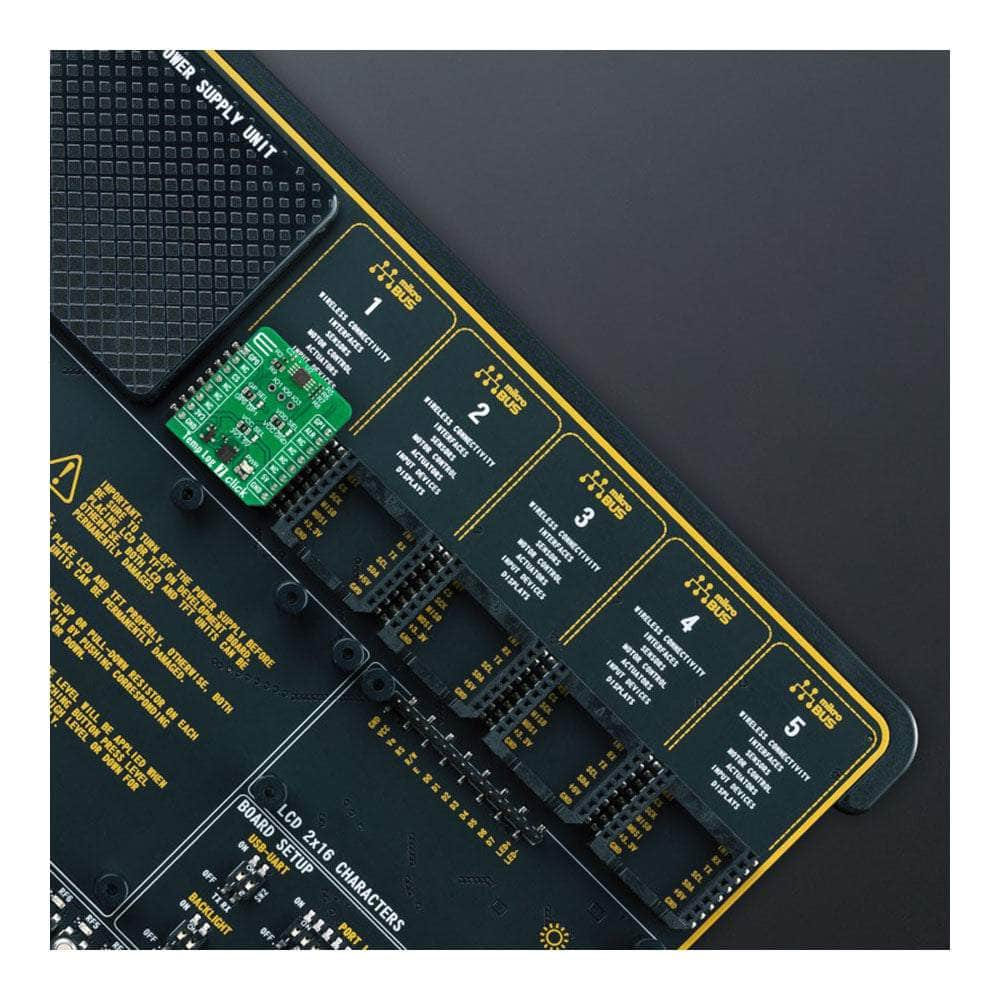

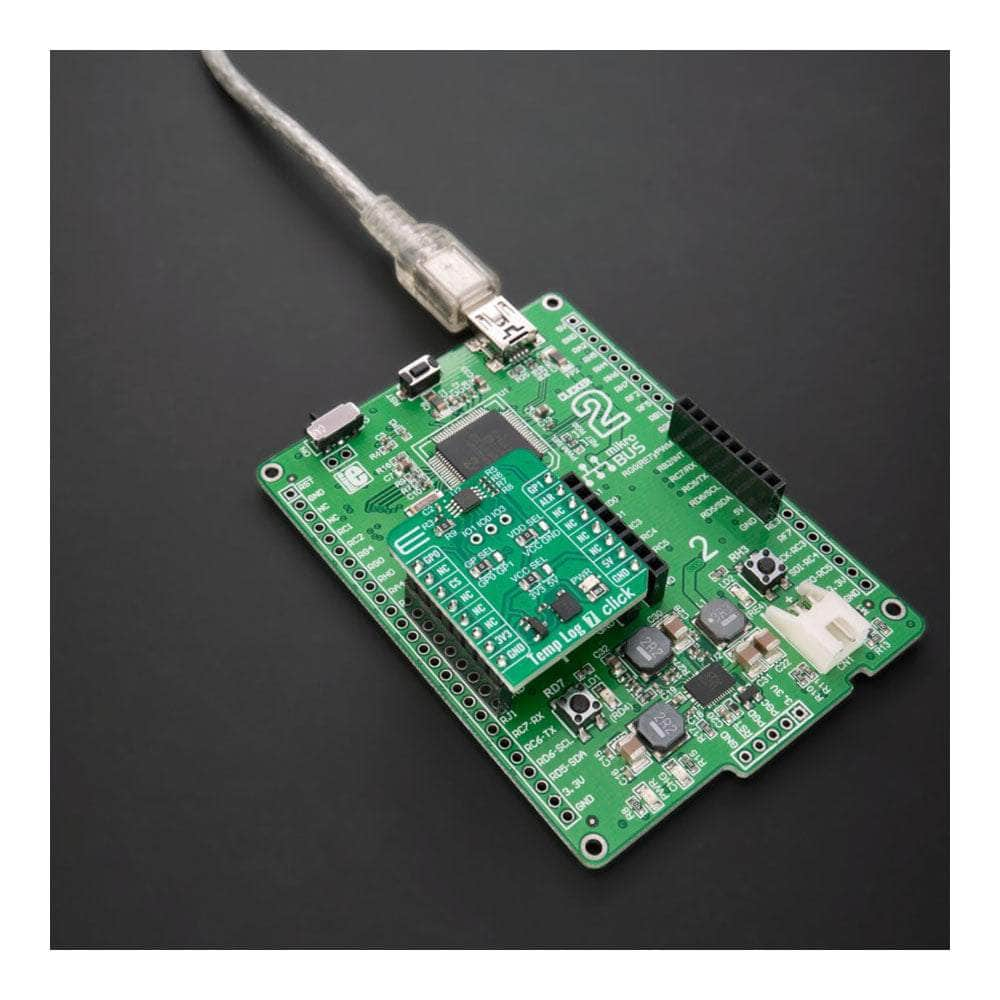
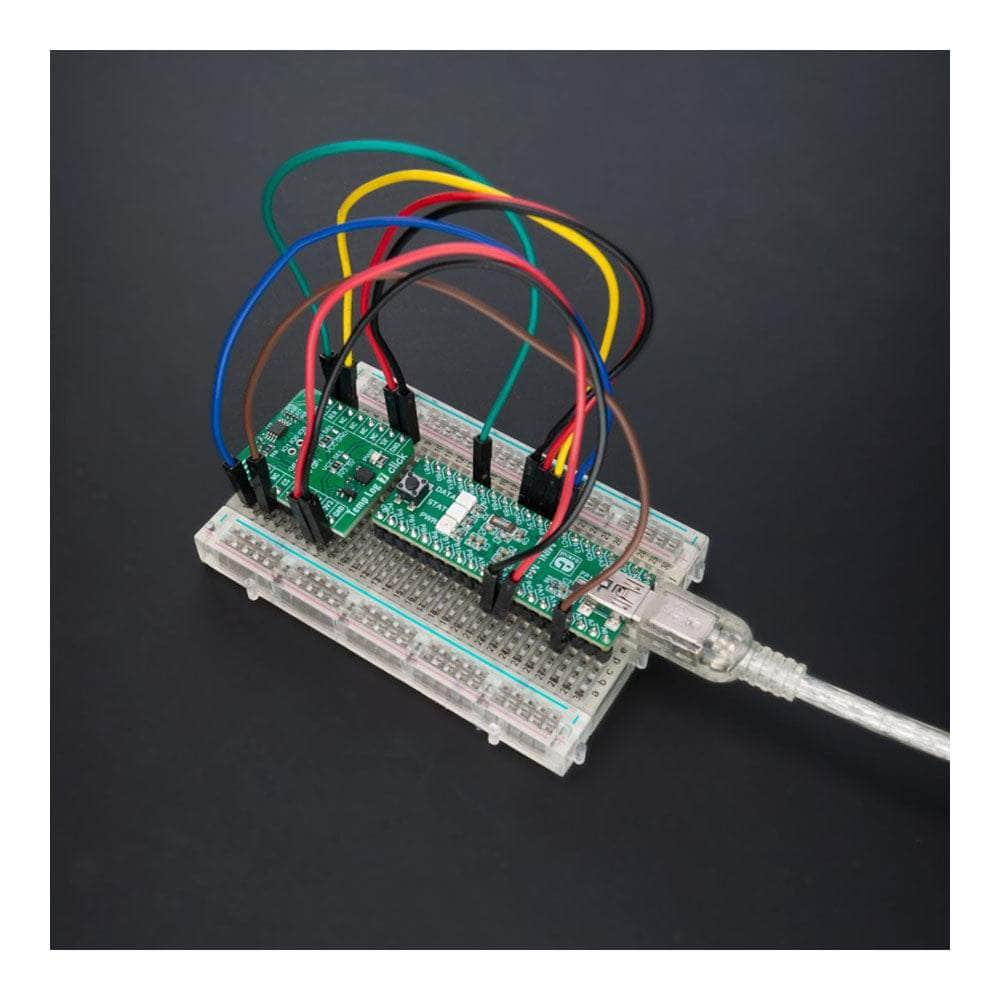
Key Features
Overview
Introducing the Temp-Log 7 Click Board™: Ultimate Solution for Accurate Temperature Measurement
Discover the Temp-Log 7 Click Board™, a powerful and compact add-on board designed to measure precisely and record temperature fluctuations in your environment. Equipped with the state-of-the-art TMP1826 temperature sensor from Texas Instruments, this board offers high accuracy and reliability. It is perfect for industrial, consumer, and environmental applications where exact temperature measurement is crucial.
Key Features of the Temp-Log 7 Click Board™
With an impressive operating temperature range of -20°C to +85°C, the Temp-Log 7 Click Board™ provides ±0.1°C (typical) and ±0.3°C (maximum) accuracy, ensuring precise temperature monitoring. The integrated 2-Kbit EEPROM and factory-programmed 64-bit unique identification number ensure effortless addressing and NIST traceability. Enjoy the convenience of a programmable alarm function, which signals the MCU in the event of a specific temperature event, and the versatility of three configurable digital I/O pins for general purposes or identifying the device's position on a shared bus.
Seamless Software Development with mikroSDK Compliant Library
Experience hassle-free software development with the mikroSDK-compliant library, which includes user-friendly functions that simplify the entire process. The Temp-Log 7 Click Board™ is a fully tested product, ready to be integrated into any system equipped with a mikroBUS™ socket.
Upgrade Your Thermal Management Today with the Temp-Log 7 Click Board™
Don't compromise on the accuracy and reliability of your temperature measurements. Choose the Temp-Log 7 Click Board™ for an unparalleled temperature monitoring experience, ensuring the optimal performance of your applications. Get your hands on this advanced and versatile solution today!
Downloads
Présentation du Temp-Log 7 Click Board™ : la solution ultime pour une mesure précise de la température
Découvrez la Temp-Log 7 Click Board™, une carte complémentaire puissante et compacte conçue pour mesurer et enregistrer avec précision les fluctuations de température dans votre environnement. Équipée du capteur de température de pointe TMP1826 de Texas Instruments, cette carte offre une précision et une fiabilité élevées. Elle est parfaite pour les applications industrielles, grand public et environnementales où une mesure exacte de la température est cruciale.
Principales caractéristiques du Temp-Log 7 Click Board™
Avec une plage de température de fonctionnement impressionnante de -20 °C à +85 °C, la carte Temp-Log 7 Click Board™ offre une précision de ±0,1 °C (typique) et ±0,3 °C (maximum), garantissant une surveillance précise de la température. L'EEPROM 2 Kbits intégrée et le numéro d'identification unique 64 bits programmé en usine garantissent un adressage sans effort et une traçabilité NIST. Profitez de la commodité d'une fonction d'alarme programmable, qui signale au MCU en cas d'événement de température spécifique, et de la polyvalence de trois broches d'E/S numériques configurables à des fins générales ou pour identifier la position de l'appareil sur un bus partagé.
Développement logiciel transparent avec la bibliothèque compatible mikroSDK
Bénéficiez d'un développement logiciel sans tracas grâce à la bibliothèque compatible mikroSDK, qui comprend des fonctions conviviales qui simplifient l'ensemble du processus. Le Temp-Log 7 Click Board™ est un produit entièrement testé, prêt à être intégré dans tout système équipé d'une prise mikroBUS™.
Améliorez votre gestion thermique dès aujourd'hui avec le Temp-Log 7 Click Board™
Ne faites aucun compromis sur la précision et la fiabilité de vos mesures de température. Choisissez le Temp-Log 7 Click Board™ pour une expérience de surveillance de température inégalée, garantissant les performances optimales de vos applications. Procurez-vous dès aujourd'hui cette solution avancée et polyvalente !
| General Information | |
|---|---|
Part Number (SKU) |
MIKROE-5598
|
Manufacturer |
|
| Physical and Mechanical | |
Weight |
0.02 kg
|
| Other | |
Country of Origin |
|
HS Code Customs Tariff code
|
|
EAN |
8606027384912
|
Warranty |
|
Frequently Asked Questions
Have a Question?
-
Is the Temp-Log 7 Click Board™ ready to use?
Yes, the Temp-Log 7 Click Board™ comes as a fully tested product, ready to be used on a system equipped with the mikroBUS™ socket.
-
Is there software available for the Temp-Log 7 Click Board™?
Yes, the Temp-Log 7 Click Board™ is supported by a mikroSDK compliant library, which includes functions that simplify software development.
-
What applications is the Temp-Log 7 Click Board™ suitable for?
The Temp-Log 7 Click Board™ is suitable for the thermal management of industrial, consumer, and environmental applications where accurate temperature measurement is critical for proper operation.
-
What are the digital I/O pins on the Temp-Log 7 Click Board™ used for?
The Temp-Log 7 Click Board™ has three digital I/O pins configurable for general purposes or to identify the device's position on a shared bus.
-
What is the programmable alarm function on the Temp-Log 7 Click Board™?
The Temp-Log 7 Click Board™ has a programmable alarm function that outputs an interrupt signal to the MCU when a specific temperature event occurs.
-
What is the unique identification number for addressing on the Temp-Log 7 Click Board™?
The Temp-Log 7 Click Board™ comes with a factory-programmed 64-bit unique identification number for addressing and NIST traceability.
-
What is the accuracy of the Temp-Log 7 Click Board™?
The Temp-Log 7 Click Board™ has a high accuracy of ±0.1°C (typical)/±0.3°C (maximum).
-
What is the operating temperature range of the Temp-Log 7 Click Board™?
The Temp-Log 7 Click Board™ supports a wide operating temperature range from –20°C to +85°C.
-
What sensor does the Temp-Log 7 Click Board™ use?
The Temp-Log 7 Click Board™ features the TMP1826, a high-accuracy, 1-Wire® compatible digital output temperature sensor from Texas Instruments with integrated 2-kbit EEPROM.
-
What is the Temp-Log 7 Click Board™?
The Temp-Log 7 Click Board™ is a compact add-on board used to measure and record the temperature of an environment over time.








